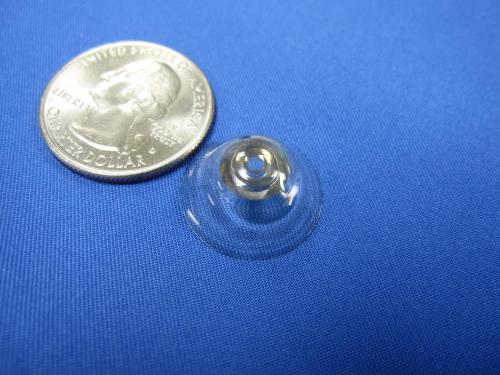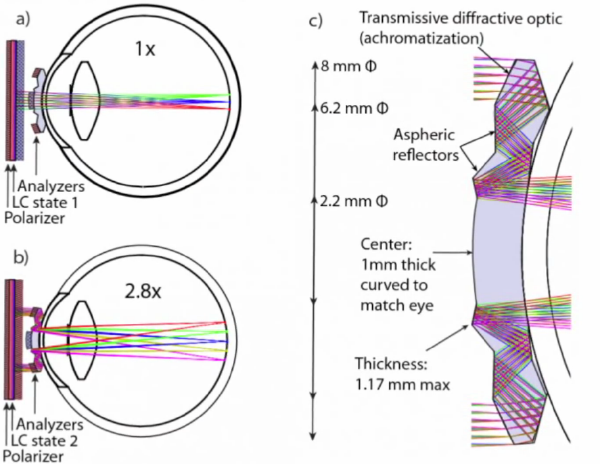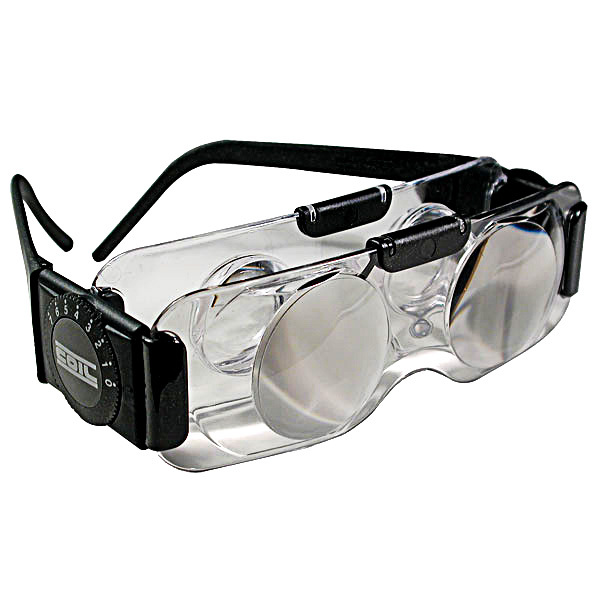Variable magnification lenses to help people with visual impairment

Variable magnification lenses
Swiss scientists are working on contact lenses with controlled magnification. Their lens with a thickness of only 1.55 mm contains a design that works on the principle of a reflecting telescope, which is activated by the movement of the eyelids. The lens magnification factor is 2.8.
The lenses consist of plastic, aluminum, polarizing films and safety glue. Aluminum forms a set of micromirrors, which, reflecting the incoming light, increase the perceived image in the manner of binoculars. Also, due to the need for constant oxygen feed of the eye, special oxygen channels are provided in the lenses.
To control the lenses need special "smart" glasses that respond to winks (but not the usual blink). Winking with one eye turns on the increase, the other - off. Points contain lenses with controlled variable polarization. In the normal view, lenses allow light to pass through the polarizing film of lenses in such a way that it bypasses the magnifying mirrors. When switching to a magnifying mode, the polarization of the lenses of the glasses and the path of the light beam in the lenses change.
')

Lens work scheme
The project is funded by DARPA. As is often the case, initially the novelty was intended for military purposes, namely for use by soldiers. So far, the device is under development, but working prototypes have already been received. In the future, the lenses can be used to combat various visual impairments, including age-related deterioration, macular dystrophy . Modern telescopic glasses for people with such disabilities are rather cumbersome designs, and successful research in this direction should greatly help people to gain the ability to navigate the outside world, to read and work with great comfort.

An example of modern telescopic glasses
Source: https://habr.com/ru/post/376529/
All Articles